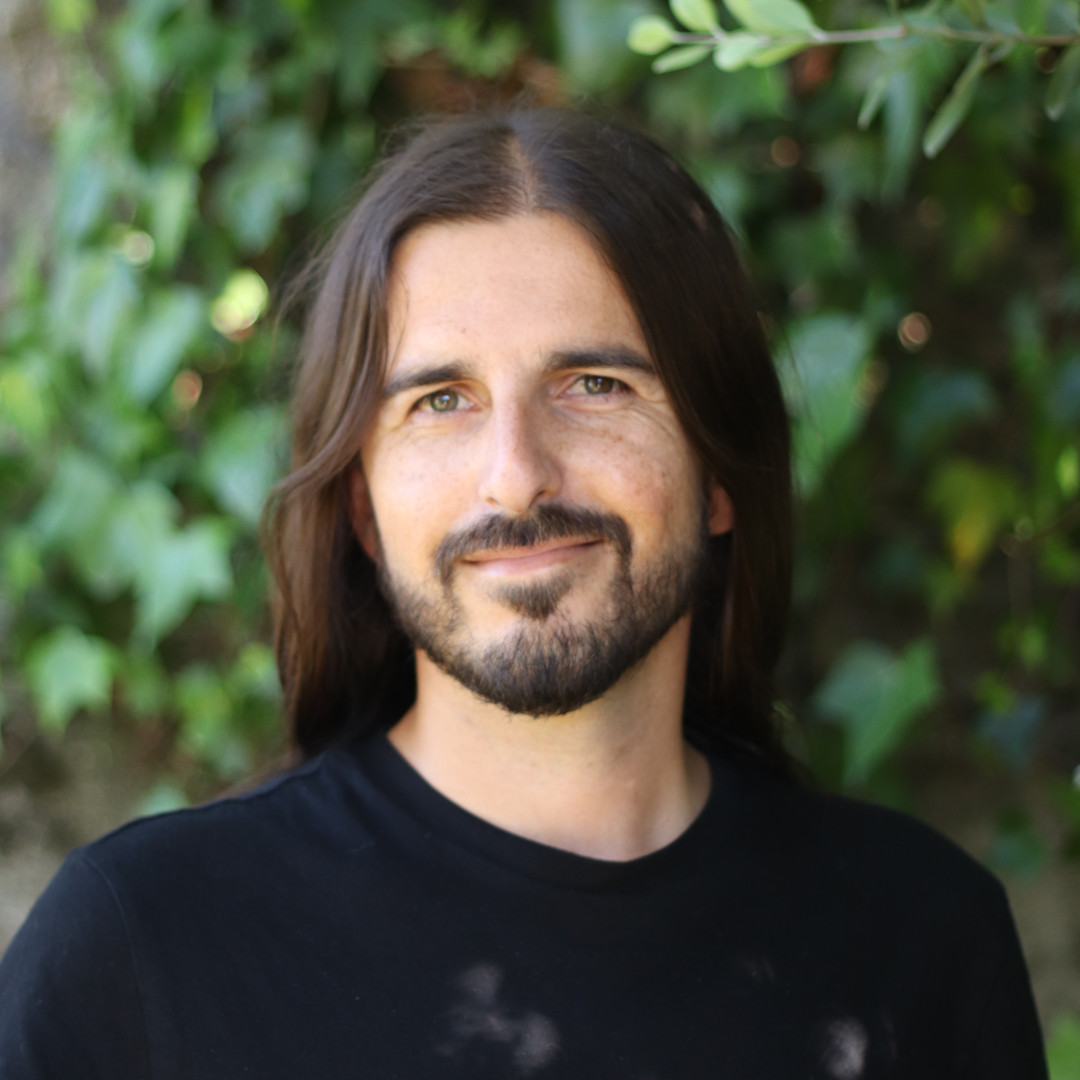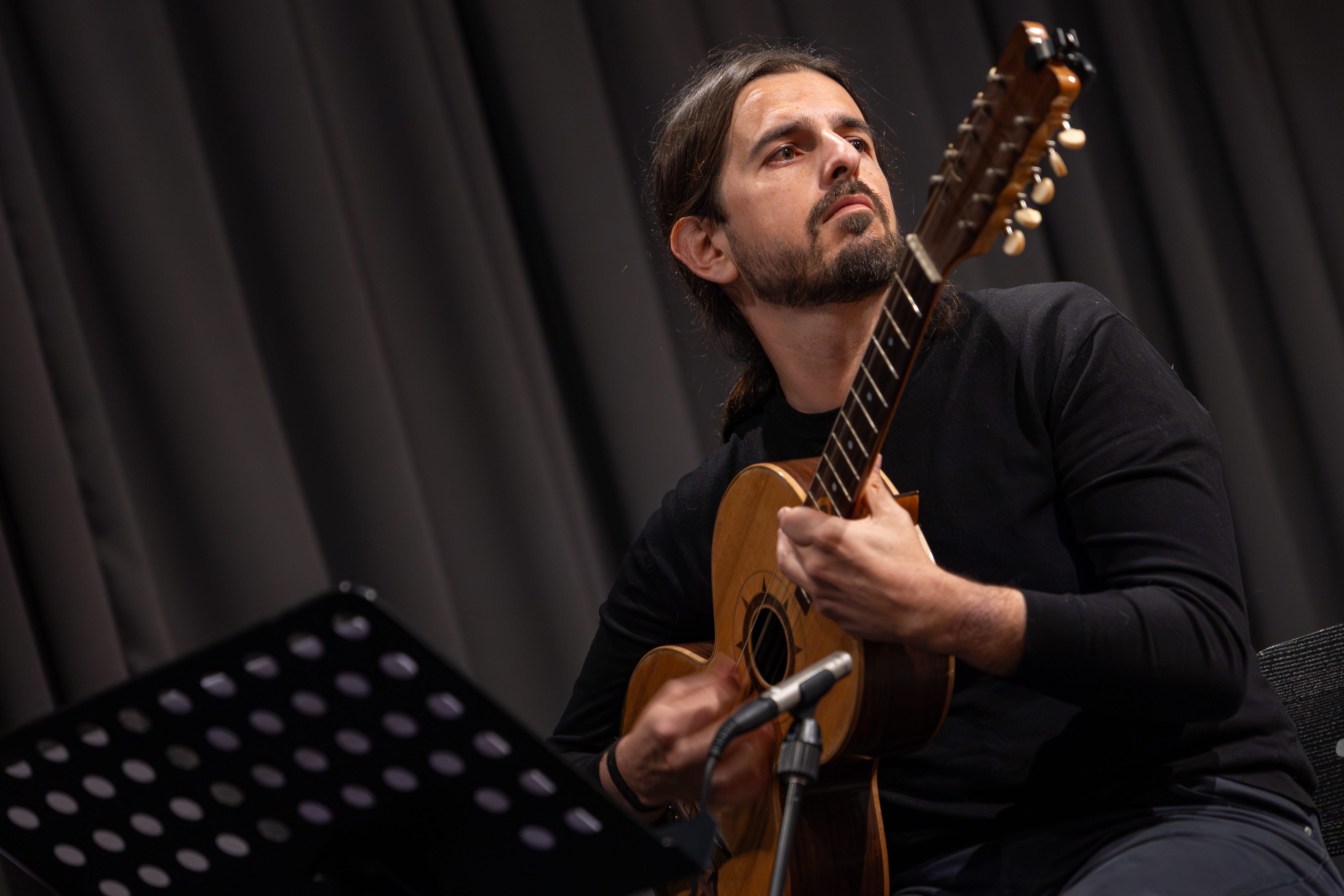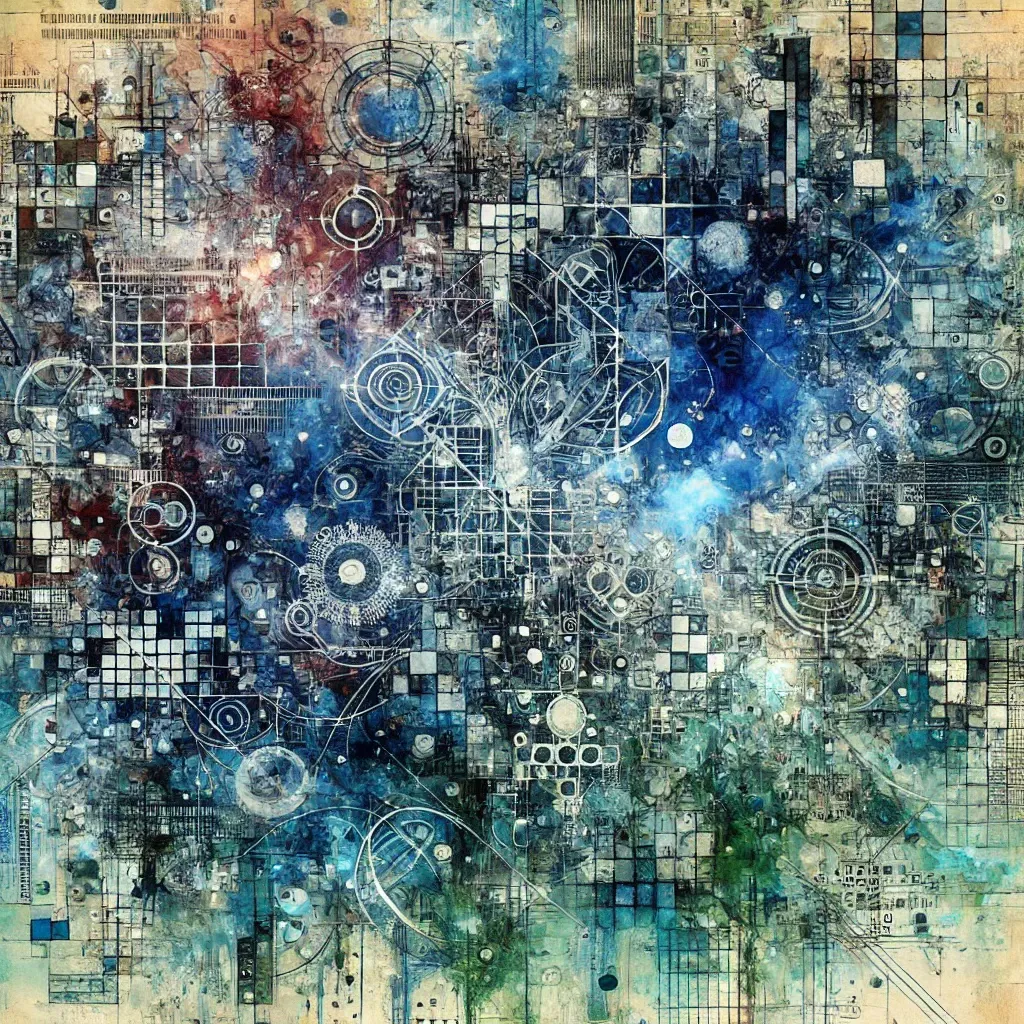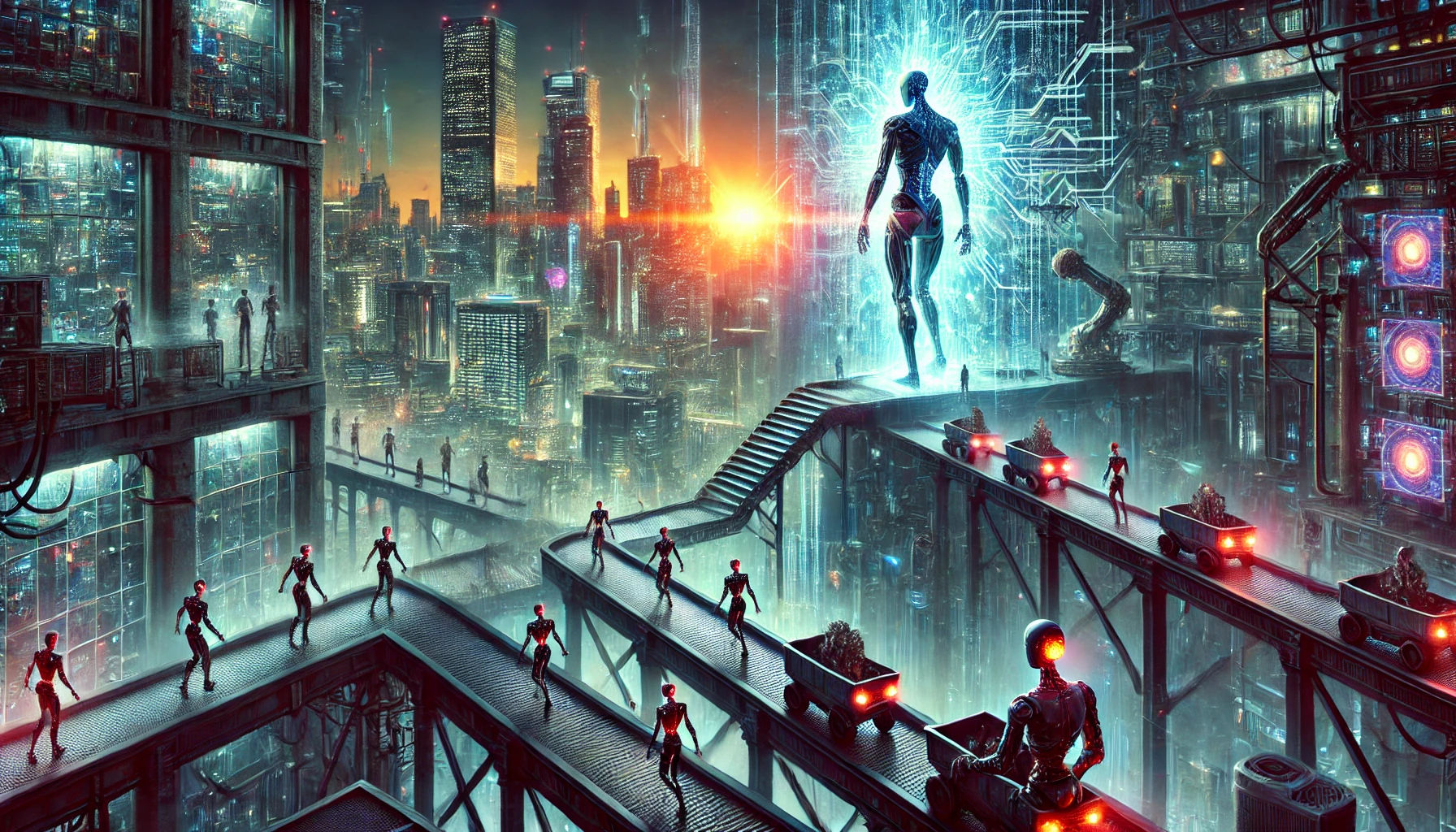Amplified Silence #3 - Generative silence
Welcome to the third issue of Amplified Silence, a monthly exploration of sound and listening. I’m Óscar Rodrigues, a musician and educator from Porto, Portugal and, each month, I’ll share with you an essay (in the section called The Long Rest ), three recommendations for things to listen, read, or watch ( Harmonic Triad ) and a list of upcoming events of my own ( Signal Boost ). Thank you for reading.
The Long Rest - Generative Silence
Earlier this month, I received a message about my first post that posed an intriguing question: “Do you have any thoughts on AI and musical silence?” I confess, it hadn’t crossed my mind, and although I haven’t responded yet, I’ve been thinking about it ever since. Yes, I do have thoughts on the relationship between AI and musical silence, and I believe exploring this connection can reveal much about how we perceive and interact with the world, as well as the role technology plays in our lives.
Silence has long captivated me, not just because I appreciate the experience itself, but also because it is a complex and often misunderstood concept. Many people view silence as an absence of sound, which is practically impossible to achieve, even if you are standing in an anechoic chamber, a special type of isolated room designed to stop reflections or echoes of sound (or electromagnetic waves). This is because, at the very least, you—the listener—will be producing sound.
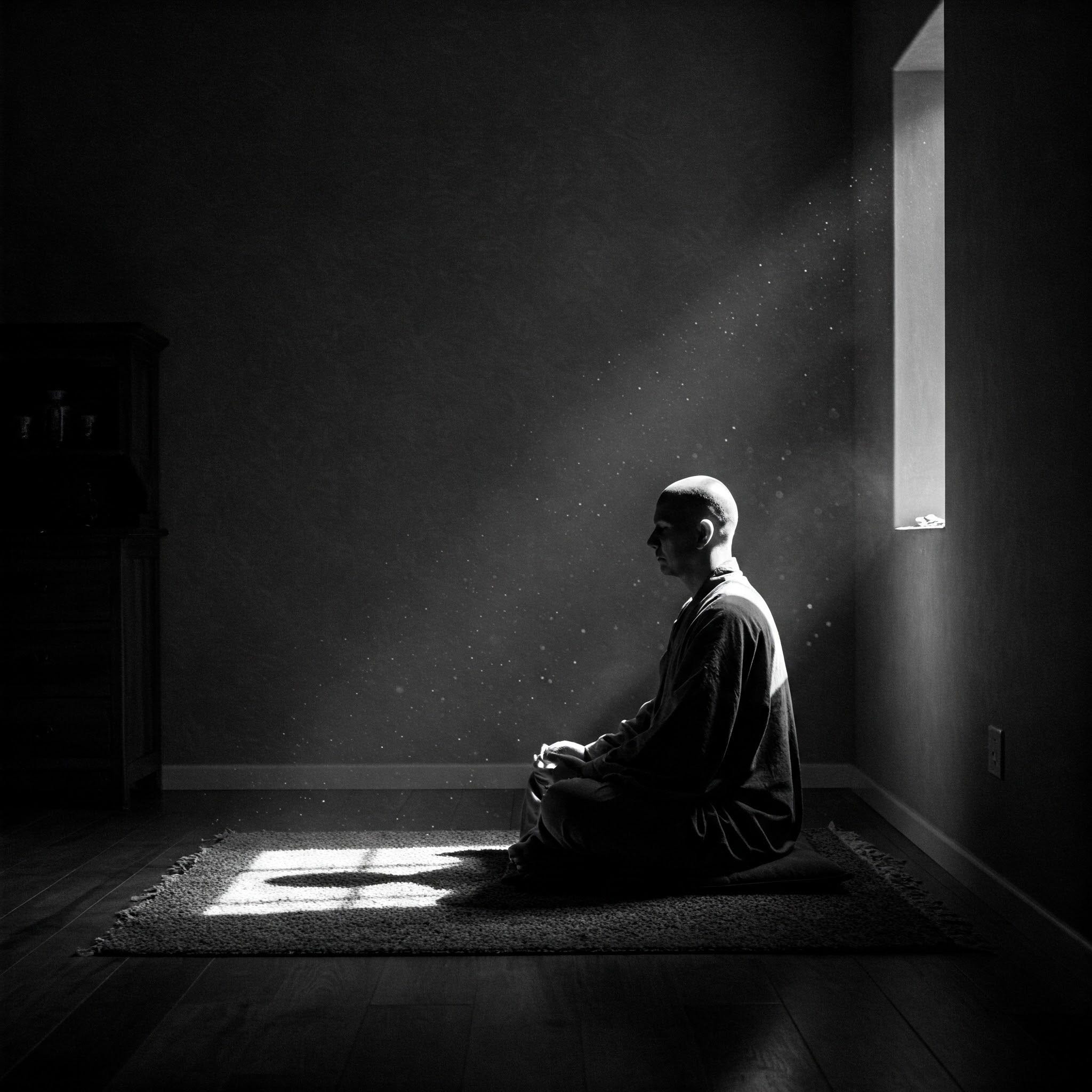
For me, silence is a mode of perception and experience that deepens our connection with our environment and ourselves. When we engage with silence, our awareness and sense of connectedness are heightened. This is why numerous cultures, religions, and philosophical traditions value the practice of silence. Activities such as taking a vow of silence, participating in silent retreats, or meditating enable practitioners to listen deeply—to the world around them and to their own thoughts. By minimizing external auditory stimuli like music, spoken voices, or city noises, our ears become more attuned to subtle sounds: the wind, rustling leaves, room tones, bodily movements, the flow of blood, or, even better, the voices inside. This effect of amplification by quietness is also why we perceive a dripping faucet as loud during the night, when we barely notice it during the day. It’s the same as when looking up to a cloudless sky on a bright, sun-shiny day: you can’t see the stars, but they are there, hidden by the much stronger sunlight. Noise, in this analogy, is the light that overpowers the dim-lit sounds. Cut the noise and they suddenly appear.
Listening to silence can be seen as a rebellious act in today’s world, which is inundated with louder, more intense stimuli. However, the question was not about silence in general, but musical silence. There’s a distinct context and intentionality in musical silence. While listening to silence in general is not a passive experience, but an active attitude of deep listening, there’s an element of subversiveness in musical silence. This is because we expect musicians—performers or composers—to produce sounds, not the absence of sound or the absence of the experience of musical sound.
This perspective does not consider, mind you, most musical rests or the silence between musical phrases, as that particular use of silence is significant only because it punctuates the actual musical sounds, much like how blank space in a drawing gives meaning to the drawing itself. In my definition of musical silence, I refer to music where the silence is structural and essential to the musical outcome, similar to how negative space is an essential element in some minimalist photography, as seen in the works of artists like Fan Ho, Hiroshi Sugimoto, or Boomoon. (The influence of Eastern philosophy and aesthetics should be evident by now.) When I think about musicians who used silence prominently, I often think of John Cage, Morton Feldman, Murray Schafer, Pauline Oliveros, Helmut Lachenmann, Ryuichi Sakamoto, Alva Noto, Brian Eno, among many others. Even when creating sounds, these artists try to replicate the inner process of listening to silence.
The question I mentioned earlier, though, was about the relationship between AI and musical silence, so you might be wondering what does AI have to do with all of this. And that’s also my point. We do not need generative AI to experience musical silence. In fact, I might go even a step further and argue that the actual models we have at our disposal aren’t designed to do it effectively. From a technical perspective, the models that use deep learning, a subset of machine learning that uses multilayered—deep—neural networks to process data and learn from it, need to be fed data points, not the absence of data. They are naturally biased towards, in the case of music, inferring the statistical connections between pitches, durations, harmonies, rhythms, phrases and so on, all of which are the opposite of silence. I’m quite familiar (because I use it for research at work) with Google Magenta, that uses Recurring Neural Networks (RNNs) and, while technically you could ask for it to generate unpredictable and extremely spaced-out or sparse music, the focus would still be on the relationship between the notes, no matter the space between them, not on the actual silence, or the experience of silence. You could even train it using MIDI transcriptions of Feldman’s or Cage’s music, but then it would be analyzing the notes, not the silence itself. Creating a silence-aware music generation algorithm could be an interesting research project, however, although the benefits would come more, I believe, from a scientific or philosophical point of view than from an artistic one. Which brings me to my next point.
Since silence is such a deeply personal experience, and centered on human perception, I don’t see the point of replacing it with AI-generated content. I can, however, imagine some cases where AI could be helpful in guiding you through the process, or creating barely-audible music, extremely sparse compositions, ambient music, or the like. But even then, you would be far better off just experiencing it yourself, by playing with other people. Meet with some friends to play Stockhausen’s Aus den Sieben Tagen or Pauline Oliveros’ Deep Listening exercises, because that experience is the real deal. Remember, silence is a mode of perception and experience that deepens our connection with our environment and ourselves. You cannot delegate your perception or your experience to a machine. Just listen to the world around you.

Harmonic Triad
March was, undoubtedly, one of the most intense months in my life. So much to say, so little time. Here are three of the things currently on my mind.
Paul Lansky - Homebrew (1992)
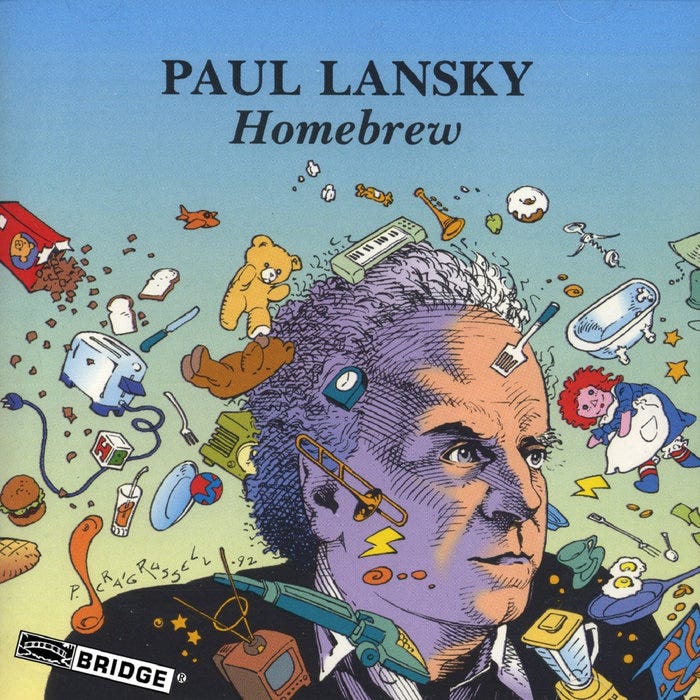
This is an album I keep going back into, and one of the most underrated ones in electronic music’s history, if you ask me. It’s a collection of clever, funny and deeply moving pieces and sounds, featuring digital sound processing in a time that it was quite a feat. It has many of the things I like in music, and I’ll try to explain them using the album’s five songs:
-
Table’s Clear : This 18-minute piece is a symphony of kitchen sounds, created with the help of Lansky’s sons, Jonah and Caleb. They recorded the sounds of various kitchen items, which Lansky then manipulated on his computer to create a surreal, gamelan-like soundscape. The piece begins and ends with recognizable kitchen noises, but in between, it transports the listener to a dreamlike state where the familiar becomes fantastical. I become warm-hearted when I imagine Paul and his sons taking the kitchen apart and recording everything they could find that made any sound, back in 1992. Music as a way of connecting people;
-
Night Traffic : This track filters the chaotic sounds of a busy highway through a musical lens. Lansky imposes shifting harmonies and timbres on the traffic noises, creating a sense of order amidst the chaos. Music as a way to resignify the world through sound;
-
Now and Then : This composition features Hannah MacKay (Paul’s wife) reading phrases from children’s stories, all related to time. Lansky adds musical continuity and decoration, turning the rhythm of speech into a soothing, musical experience. The piece captures the essence of reading to children, highlighting the musicality of everyday language;
-
Quakerbridge : Based on the sounds of a suburban shopping mall, this piece explores the nostalgia evoked by everyday noises. Lansky uses the varied sounds of people going about their business to trigger musical events, with large-scale harmonies providing a cohesive structure. Finding beauty in the most unsuspicious places;
-
The Sound of Two Hands : This track uses the simple sound of hand claps, manipulated to create a complex rhythmic exercise. Lansky turns these basic percussion sounds into a high-tech exploration of rhythm and harmony, celebrating the potential of both low and high technologies in music.
Ed Yong - An Immense World
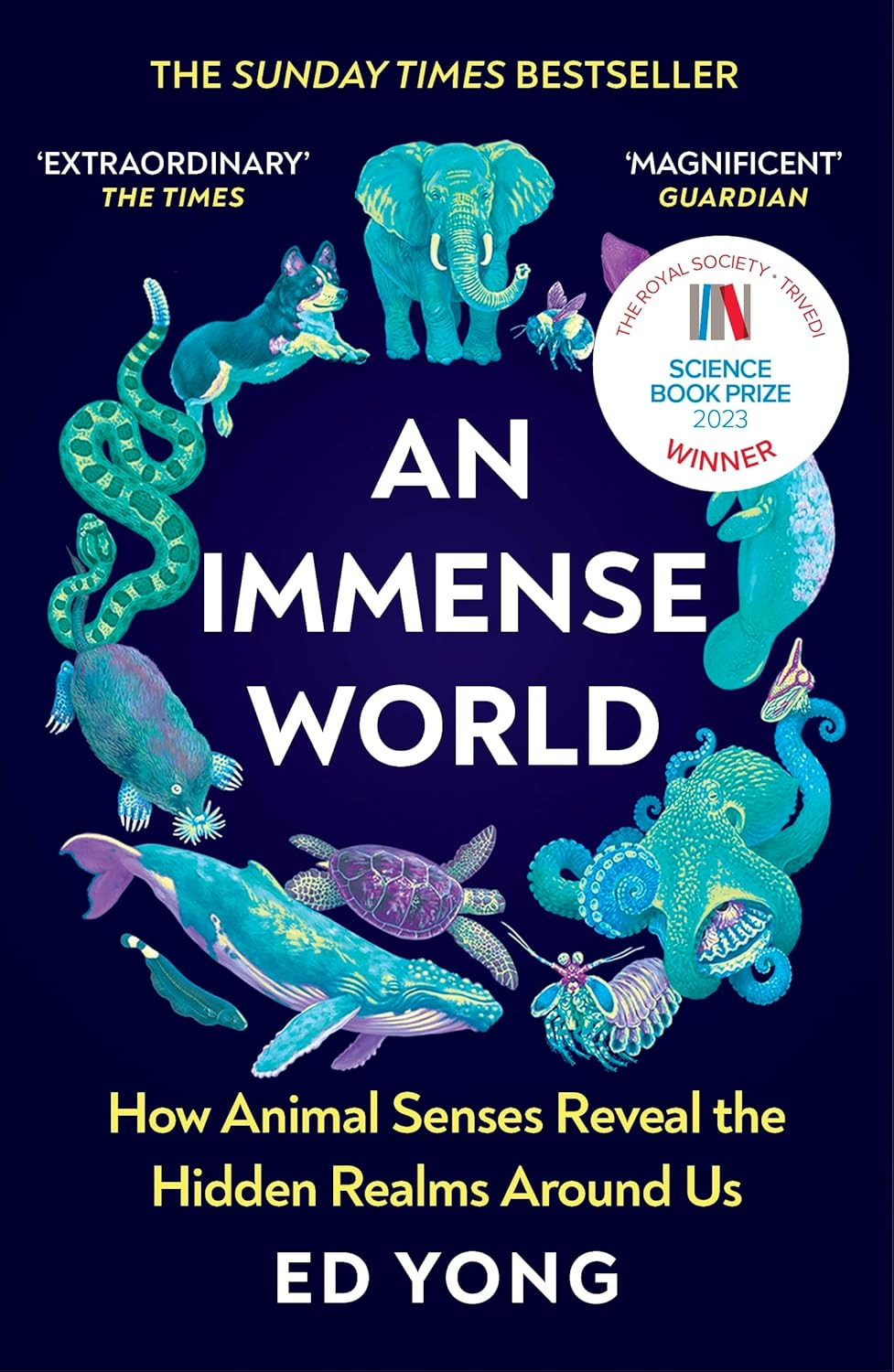
I’ve recently listened to Ed Yong’s “An Immense World”, which is a captivating exploration of the sensory worlds of animals, offering a profound insight into the diverse ways creatures perceive their environments. Yong, a Pulitzer-winning journalist, takes us on a journey through the umwelt—the unique sensory bubble that each animal inhabits. This concept, introduced by Jakob von Uexküll, a German-Estonian Biologist and Philosopher, underscores that every species, obviously including humans, experiences only a fraction of the immense world around us, shaped by their specific sensory capabilities.
The book delves into the extraordinary senses of various animals, from the electromagnetic field detection of some birds to the echolocation abilities of bats. Yong’s narrative is both scientifically rigorous and personally engaging, inviting readers to grasp the complexity and richness of these hidden realms. He emphasizes that our human perception is just one of many, challenging us to see beyond our limited senses and appreciate the vast, interconnected web of life that surrounds us.
In a world dominated by subjective experiences and personal opinions, “An Immense World” serves as a reminder of the objective reality that exists beyond our individual perceptions. It encourages us to embrace a more inclusive understanding of the world, one that acknowledges the diverse experiences of all living beings. By doing so, we can foster greater empathy and compassion, not just for other humans, but for the entire natural world. And, for me, it also helped me become more critical of the certainty based on our subjective experience.
Severance (the TV Show)
I’m not usually driven to the zeitgeist-y works of art, especially coming from streaming platforms, but I feel Severance, on AppleTV+, is different. A beacon of hope in a sea of algorithm-driven productions, it is both complex and stunningly beautiful. The audience is never treated condescendingly, and its intricate plot is a labyrinth of interpretations and theories, inviting viewers to engage with its multiple meanings and subtle nuances. And, of course, to continue the discussion online with the many speculative theories that have emerged precisely because it has depth and ambiguity, two things the world desperately needs.
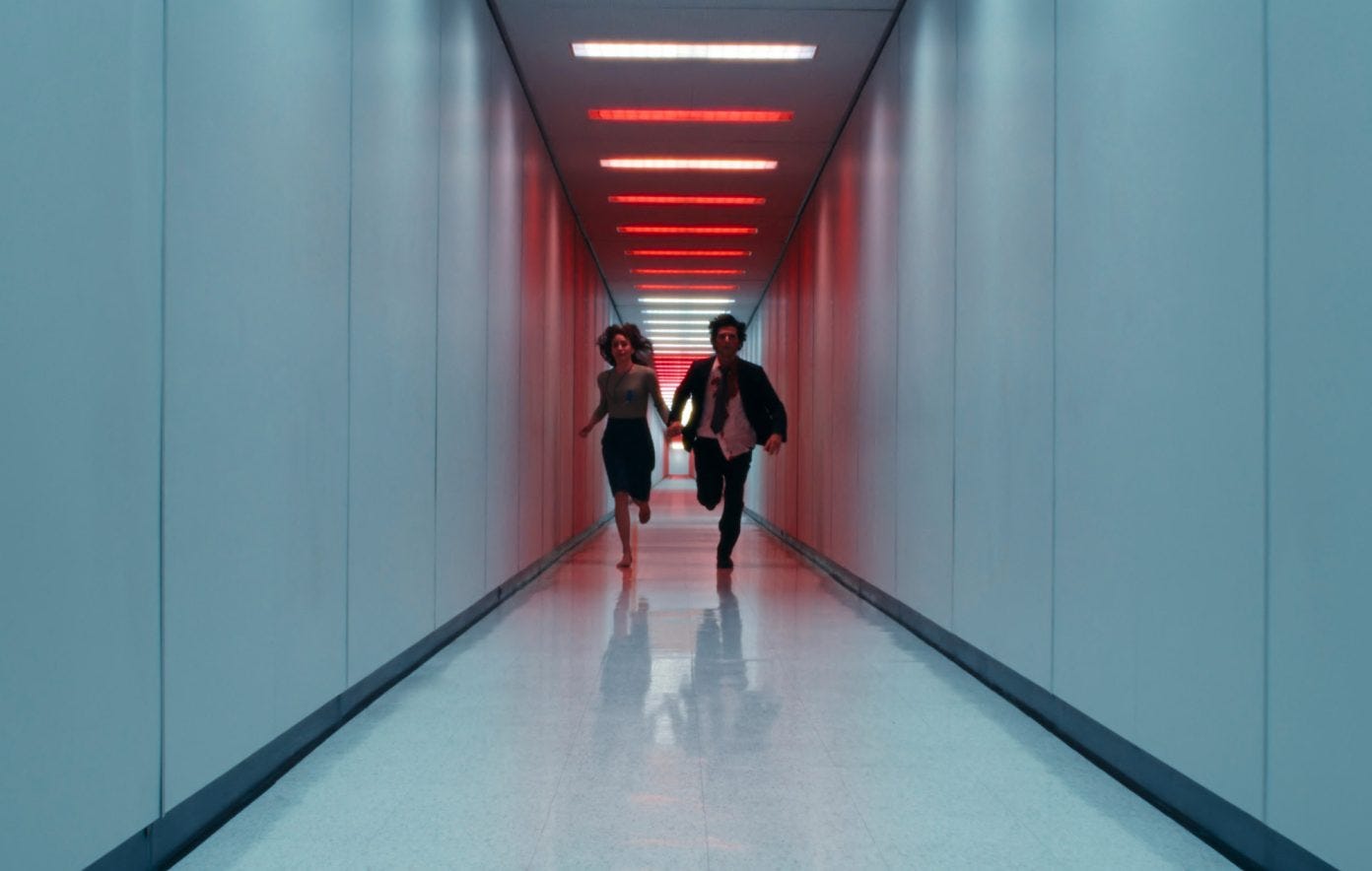
Visually, “Severance” is a triumph of cinematic artistry. Its stunning visual poetry creates a world that is both eerily familiar and unsettlingly surreal. The meticulous production design and cinematography are not merely backdrops but integral to the story’s emotional and thematic resonance. Scenes like the endless, sterile corridors of Lumon Industries and the stark contrast between the “innie” and “outie” worlds serve as visual metaphors for the characters’ internal struggles and the show’s broader themes.
But I believe that the main reason why I and recommending it is that it made me hopeful of the future for cinema and art, by demonstrating that high artistic value can still captivate and move big audiences deeply. Its critical approach to technology and work is a timely commentary on our modern existence, and I’m glad to see so many people can relate with it in their own way.
Signal Boost
Upcoming events
My schedule in April will be dominated by the third edition of Porto Electronic Music Symposium, which will happen on a single day, April 26th 2025 at Casa da Música. Stay tuned for more updates, but I’m sure it’s going to be a very inspiring day full of events, all dedicated to the relationship between tradition and technology.
On April 15th 2025, I’ll be premiering my new project with João Diogo Leitão, a duo with Viola Braguesa, Viola Campaniça and electronics. The first concert is at University of Porto’s Casa Comum, at 18h30.
To end the month, on April 30th, I’ll go back to performing with João Diogo Leitão at Casa da Música’s Clubbing. At the same event, Promenade, a concert happening on four different rooms at the same time, will be returning.
See you next month,
Óscar
